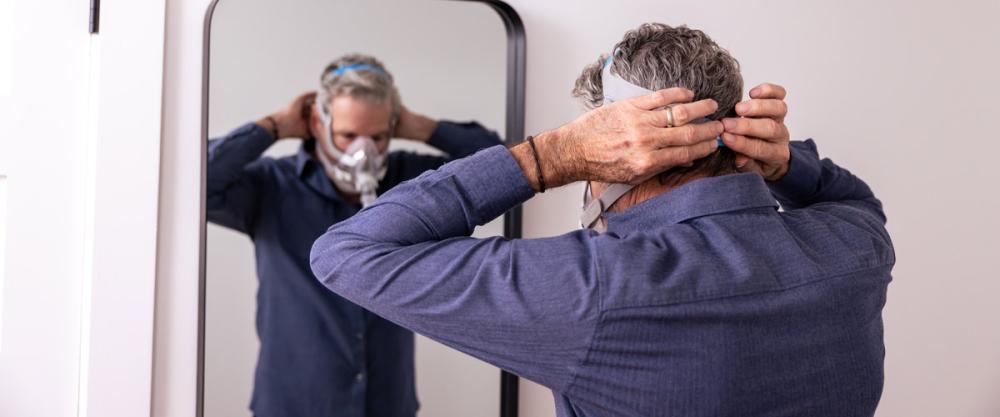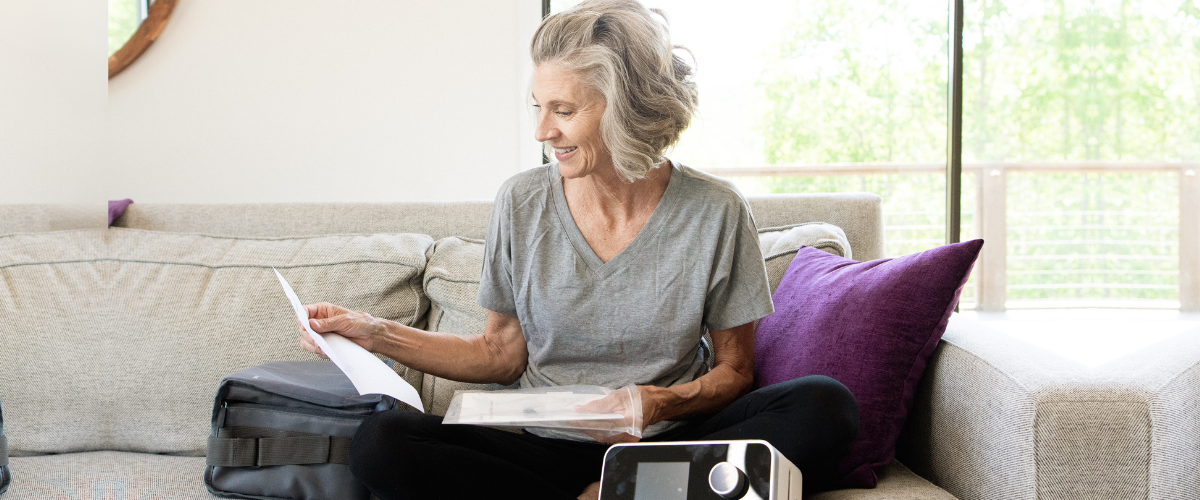It can be overwhelming when you are introduced to your CPAP. You most likely took a test either at home or in the lab where you were told you stop breathing at night and you need to use a CPAP. So, let’s break this down into smaller pieces so YOU start to feel comfortable with your machine.
Step 1: Your Sleep Test
Let’s start with your sleep test. Whether it is a home test or an in-lab test there are two things you should know so you know that it is accurate. One is that a person who is certified in sleep as a technologist and is skilled in administering the test and reporting on the results.
They are also looking at how long your apneas (the time you stop breathing completely) and hypopneas (the time you breathe so shallow your oxygen levels drop significantly) and mark them for the doctor to evaluate.
A board-certified doctor who specializes in sleep review will review the results of the study. The doctor determines how severe your sleep issue is and what your best treatment options are.
Step 2: Your CPAP Mask
Once a machine is determined for you and the doctor has selected the proper setting you will receive the machine. You have a significant say in what mask you will use with the machine. A mask that works for a family member or friend may not work for you. There are positives and negatives to each type of mask so do not make this decision lightly.
Types of CPAP Masks
Nasal CPAP masks are popular as they are small and have minimal contact with your face. However, they are not suitable for people who breathe through their mouth.
Nasal pillows are the smallest masks and have two small tubes that seal under your nostrils. But this type of mask can make the pressure of the air feel a bit stronger. Like nasal masks, they are not suitable for mouth breathers.
Full face masks have the benefit that you can breathe through both your mouth and your nose. They they have the most contact with your face and work well for mouth breathers. I have found that people with claustrophobia do best with these because of the ability to breathe through your mouth and your nose.
Step 3: Get Adjusted
Ten PM at night comes and you go to bed with the machine and one of the biggest issues is you cannot fall asleep. You have this thing on your face and air blowing and nothing to distract you except maybe you dog who keeps growling at the machine. This is more common than you think and if this occurs I would recommend you take the desensitization approach to using your PAP.
The desensitization approach looks something like this. Day one you put the PAP in the living room next to your favorite chair. You turn on your favorite show (not the news or anything that will make you angry) and wear it for 20 minutes. What you want is to be distracted by the tv while you are wearing the mask. Each day after you will increase by at least 10 minutes until you can wear your PAP comfortably for 2 hours.
Now it is time to return to the bedroom and start wearing your PAP at night.
If you continue to have difficulty it may be time to look for assistance in learning some relaxation techniques or talking to your doctor for other suggestions or for a change of mask.
About the Author
My name is Amy Korn-Reavis. I’m a clinical sleep educator who has been working with individuals, students and physicians for over 30 years. Some have called me the “Better Sleep Coach”. Others have called me a total “Sleep Geek”. I am not ashamed! I am happiest when I get to speak with someone I’ve helped and found out how well they are sleeping and how much their health and life has changed for the better.






